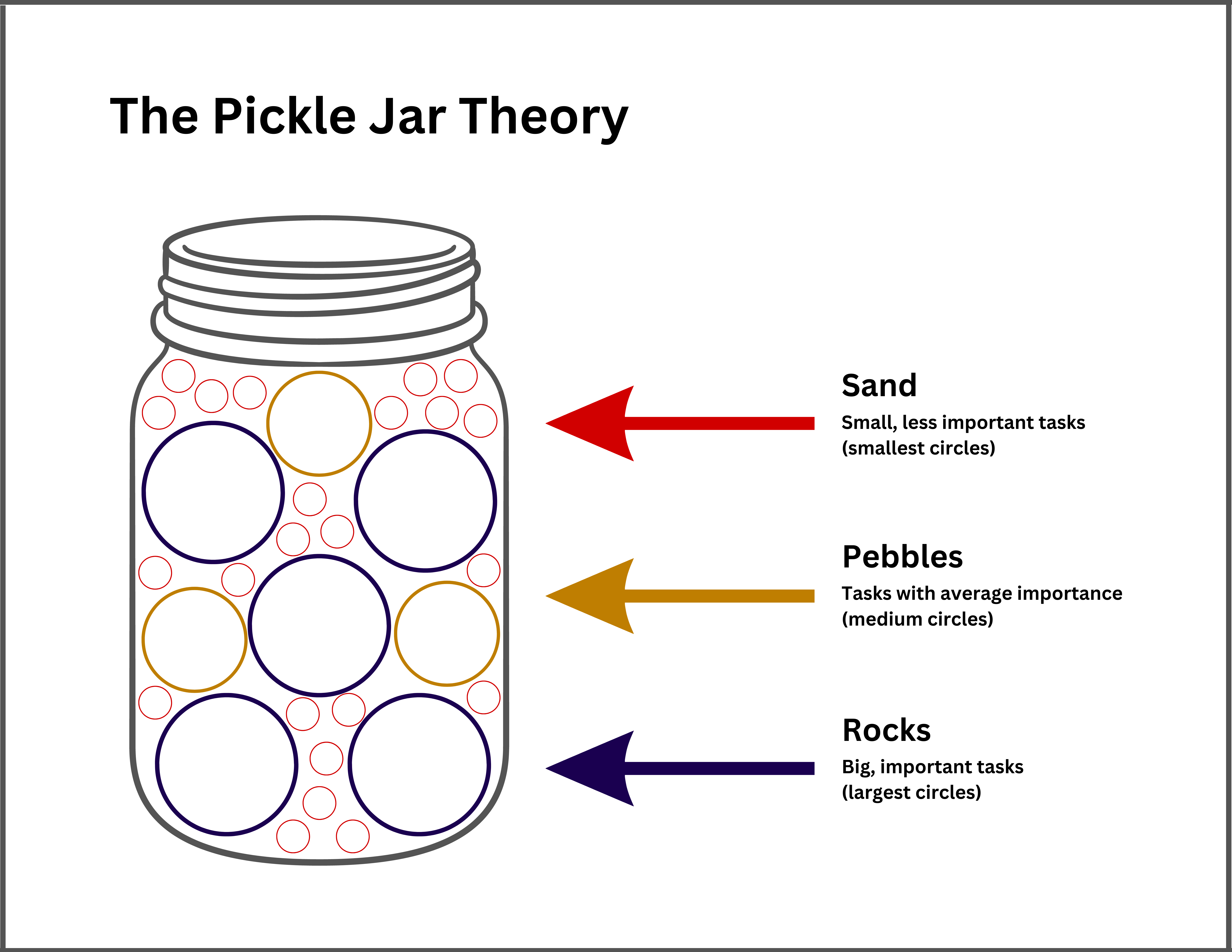7 Time Management: Prioritizing
At the beginning of a semester, it is useful to sit down and map out your major deadlines: coursework, teaching or research assistantships, scholarship and grant applications, and your personal goals, as discussed in the previous section.
Once you have made your list of goals and deadlines, try ranking them in order of importance. Identify your top three goals and focus your energy there. Once those are accomplished, move on to less vital or time-sensitive goals.
The Pickle Jar Theory
One way to conceptualize time management and prioritization is “The Pickle Jar Theory”. Think of your week as a jar, with limited space, and your commitments as rocks of varying sizes. The rocks represent big, important tasks, like finishing a chapter of your thesis. The pebbles represent tasks with average importance, such as meeting with your advisor. Finally, the small grains of sand represent small, less important tasks, such as answering emails.
In order to make the most effective use of your time, schedule the larger, most important items first. These big rocks take up the most space; if you pour in the pebbles and the sand first, the rocks will not fit as easily. Conversely, if you place your rocks in the jar first, and then pour in the pebbles and the stones, they can fill the spaces between the rocks and you can fit more into the jar.
 This metaphor shows the benefits of prioritizing. Make sure the most important items go into your agenda first, and then fill gaps to make the most of your time.
This metaphor shows the benefits of prioritizing. Make sure the most important items go into your agenda first, and then fill gaps to make the most of your time.

